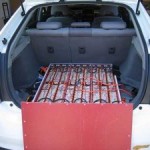 A new way to increase by five to seven times the conventional energy storage capacity was developed by Nanotune, a company from Mountain View, California.
A new way to increase by five to seven times the conventional energy storage capacity was developed by Nanotune, a company from Mountain View, California.
They use ultracapacitor technology that will make electric vehicles cheaper and could extend their current range.
The advantage of conventional utracapacitors is that they deliver fast burst of power, they can be recharged hundreds of thousands times without losing much energy storage capacity, and can work well in a wide range of temperatures but are very expensive and they store too little energy to replace batteries at electric vehicles.
The Nanotune tries to make the difference and says that its utracapacitors are close to compete with the conventional battery and even surpass it. Even using conventional electrolyte they demonstrated energy storage of 20watt-hours per kilogram compared with 5 watt-hours for conventional ultracapacitors. Now they use a more expensive ionic-liquid electrolyte that made the actual ultracapacitors to store 35 watt-hours per kilogram.
Using their research programme at the end of the year they hope to have ultracapacitors with double energy storage capacity says Nanotune CEO, Mr. Kuan Tsae. Only 40 watt-hours per kilogram for ultracapacitors is an improvement for the batteries used in electric vehicles.
Using nanotechnology many companies are trying to solve the biggest issue of electric vehicles today: batteries and their limited energy storage capacity in fact their maximum range.
Unfortunately Nanotune’s technology still remains expensive. So, in order to make electric vehicles competitive with those conventional one -The Department of Energy- has proposed a goal of $250 per kilowatt-hour. Nanotune is trying to come down the costs to less than $150 per kilowatt-hour if the some key materials will continue to fall.
Nanotune isn’t exclude the fact that according to recent academic findings energy storage of ultracapacitors can be increased by adding small amounts of ruthenium and they will try it.



